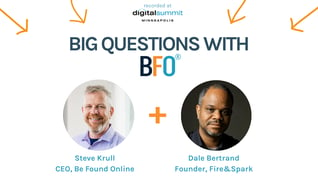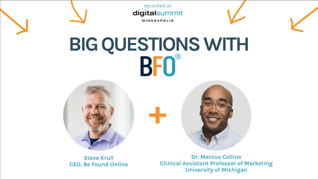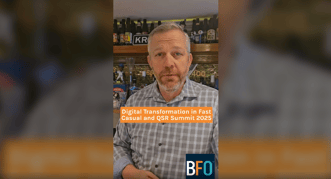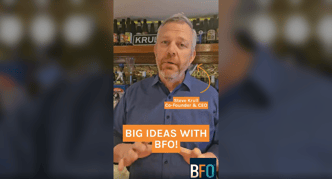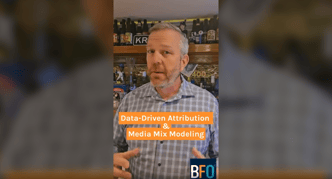The New Rules of Content Optimization: Moving Beyond Keywords
September 05, 2024
8 Minute Read

Imagine you’re crafting a piece of content you’re sure your audience will love. You’ve done your keyword research, sprinkled them throughout the text, and hit publish. But when the results come in, they’re…underwhelming.
Sound familiar? If so, you’re not alone. Many content creators focus heavily on keyword optimization, believing it’s the key to online success. And while keywords are important, they’re just one piece of the puzzle (or pie—we prefer pie).
Content optimization is about much more than just ranking for the right keywords. It’s about delivering real value to your audience and creating content that truly connects with readers. This is where holistic content optimization comes into play.
content that truly connects with readers. This is where holistic content optimization comes into play.
Unlike traditional keyword optimization, which focuses on targeting specific search terms, holistic content optimization looks at the bigger picture. It considers the entire user journey, from the structure of your content to how it’s experienced on different devices (it’s the whole pie—not just a slice).
A well-rounded approach to content optimization not only helps improve your search rankings but also drives engagement, builds trust, and converts visitors into loyal customers. Ready to learn how to take your content to the next level? Let’s dive in!
The Problem With Focusing Only on Keywords
Let’s face it—keywords have been the cornerstone of SEO for years. It’s easy to get caught up in finding the perfect phrases that’ll catapult your content to the top of search results. But here’s the thing: an overemphasis on keywords can actually do more harm than good.
When you focus too much on fitting in every possible keyword, the quality of your content can suffer. We’ve all seen those articles that read like they were written for a robot rather than a human—awkward, repetitive, and ultimately unengaging (no, thank you). That’s what happens when keyword stuffing takes over.
repetitive, and ultimately unengaging (no, thank you). That’s what happens when keyword stuffing takes over.
Not only does keyword stuffing make your content difficult to read, but search engines are also not having it anymore. Algorithms can recognize when content is unnaturally packed with keywords, and they’ll penalize you for it. So instead of rising in the ranks, your content might get buried.
In this new SEO world, it’s all about delivering value, making sure your content is relevant, and creating an experience that keeps users coming back. So while keywords are still important, they should be just one part of a broader, more holistic content strategy.
Our Favorite Content Optimization Strategies
Content Relevance and Value
Imagine searching for something online, clicking on a promising link, and finding the content vague, outdated, or unhelpful. Frustrating, right? That’s why content relevance and value are so important. In today’s digital world, people expect content that’s accurate and directly addresses their needs. This is where understanding and focusing on user intent comes in.
User intent is about knowing what your audience is truly searching for—whether they’re learning about a topic, ready to buy, or just browsing. For example, if someone searches for “best laptops for remote work,” they want detailed comparisons and recommendations, not just links to buy.
example, if someone searches for “best laptops for remote work,” they want detailed comparisons and recommendations, not just links to buy.
To keep your content relevant, regularly review its performance and update it with current info. Staying on top of industry news and changes in your audience’s behavior ensures your content remains fresh and valuable. But don’t just chase every trend—only incorporate those that genuinely add value.
Content Structure and Readability
We’ve all seen it—blocks of text so dense there’s no way we’re actually going to read them. Poorly structured content can overwhelm readers, making them click away before they even get to the good stuff. That’s why clear structure and readability are key to content optimization.
Start by using headings and subheadings to break your content into digestible sections (like we did here!). You can also use lists or bullet points for readability. They present key information clearly, making it easier for readers to absorb the main points without getting lost in lengthy paragraphs.
Formatting and design are just as important. Break up large paragraphs with shorter sentences, images, or pull quotes. Use white space to give your content room to breathe and avoid a cluttered look. Remember: The easier your content is to read, the more likely your audience will stay and engage.
User Experience (UX)
Websites that are slow—ain’t nobody got time for that. No matter how great your content is, poor user experience (UX) can drive visitors away before they even get a chance to see it.
Improving site navigation is a key first step. Your content might be excellent, but if users can’t find it, it’s lost. Use a clear, logical menu structure, organize content into categories, and link to related topics internally.
structure, organize content into categories, and link to related topics internally.
Load time is another critical factor. In today’s fast-paced world, slow pages frustrate users and increase bounce rates. To improve load times, compress images, minimize heavy scripts, and ensure your hosting can handle traffic.
Lastly, mobile-friendliness is a must. With so many people accessing content on their phones, a responsive design that adapts to different screen sizes is essential. Buttons should be easy to tap, text readable without zooming, and images should resize appropriately.
Multimedia Integration
Copy is important, but unfortunately, text alone can sometimes fall flat. Adding elements like images, videos, and infographics instantly elevates your content and makes it more engaging.
When it comes to best practices, quality is key. Use high-resolution images and professional-looking videos that reflect your brand. Also, consider accessibility—add alt text for images and captions for videos to help all users engage.
Loading times are important, too. Large image files and heavy videos can slow down your site, so optimize these elements for speed. Compress images without losing quality and host videos on platforms like YouTube or Vimeo to reduce the load on your site.
Internal and External Linking
Internal and external linking are both one thing: overlooked. They boost SEO and make it easier for your audience to explore your content—so it’s time to pull up a chair for both.
Internal linking connects different pages within your website. Internal links help search engines understand your site’s structure and guide users to related information, keeping them on your site longer. For example, if you write about digital marketing strategies, linking to a post on SEO tips can lead readers to more valuable content (see how we did that here?).
External linking involves linking to reputable websites, which boosts your content’s credibility. By linking to authoritative sources (like this one), you demonstrate thorough research and signal to search engines that your content is part of a broader discussion.
Content Freshness
In a fast-paced digital world, keeping your content fresh and up-to-date is essential. Freshness boosts your SEO and ensures your audience receives accurate, relevant information.
receives accurate, relevant information.
One effective way to maintain content freshness is through regular updates. Schedule periodic reviews to find areas that need refreshing, like updating statistics or revising outdated examples. Even small adjustments can breathe new life into an article.
Content repurposing is another great technique. Transform existing content into different formats—like turning a blog post into an infographic—to reach a broader audience. This maximizes your content's value while catering to different preferences.
Analytics and Continuous Improvement
These days, relying on gut feelings (sadly) isn’t enough when it comes to marketing. To understand how your content performs, you need to dive into analytics.
So, what metrics should you track? We recommend page views, engagement (like time on page, bounce rate, and scroll depth), and your conversion rate.
Just be sure to revisit your analytics regularly. Monitoring your metrics helps you see how your adjustments impact performance. This ongoing process ensures you're not just creating content but continuously optimizing it.
Optimizing Your Content
Remember, the key to successful content lies in adapting your strategy based on audience feedback and the metrics you track. By embracing these practices, you'll not only boost your content's visibility but also build a loyal audience that keeps coming back for more.
Need help optimizing your content? That’s what we’re here for. We’ll do the heavy lifting so you can get back to doing what you love. Reach out to us today to get started!
Subscribe Here!

Jon Pappas
Jonathon is the Director of Organic Search at BFO. He’s a reliable and consistent member of our team and is very detail-oriented and client-focused.
CATEGORIES
SUBSCRIBE TO OUR BLOG
Stay up to date with the latest industry best practices in digital marketing!























.png?width=339&height=179&name=Webinar%20Banner%20(1).png)



.png?width=339&height=179&name=July%20Webinar%20(Newsletter).png)

.png?width=339&height=179&name=Webinar%20Banner-April-02%20(1).png)
%20(4).png?width=339&height=179&name=Webinar%20Banner-May-02%20(1)%20(4).png)




.png?width=339&height=179&name=March%202023%20Webinar%20Ad%20(autoresponder).png)


















































